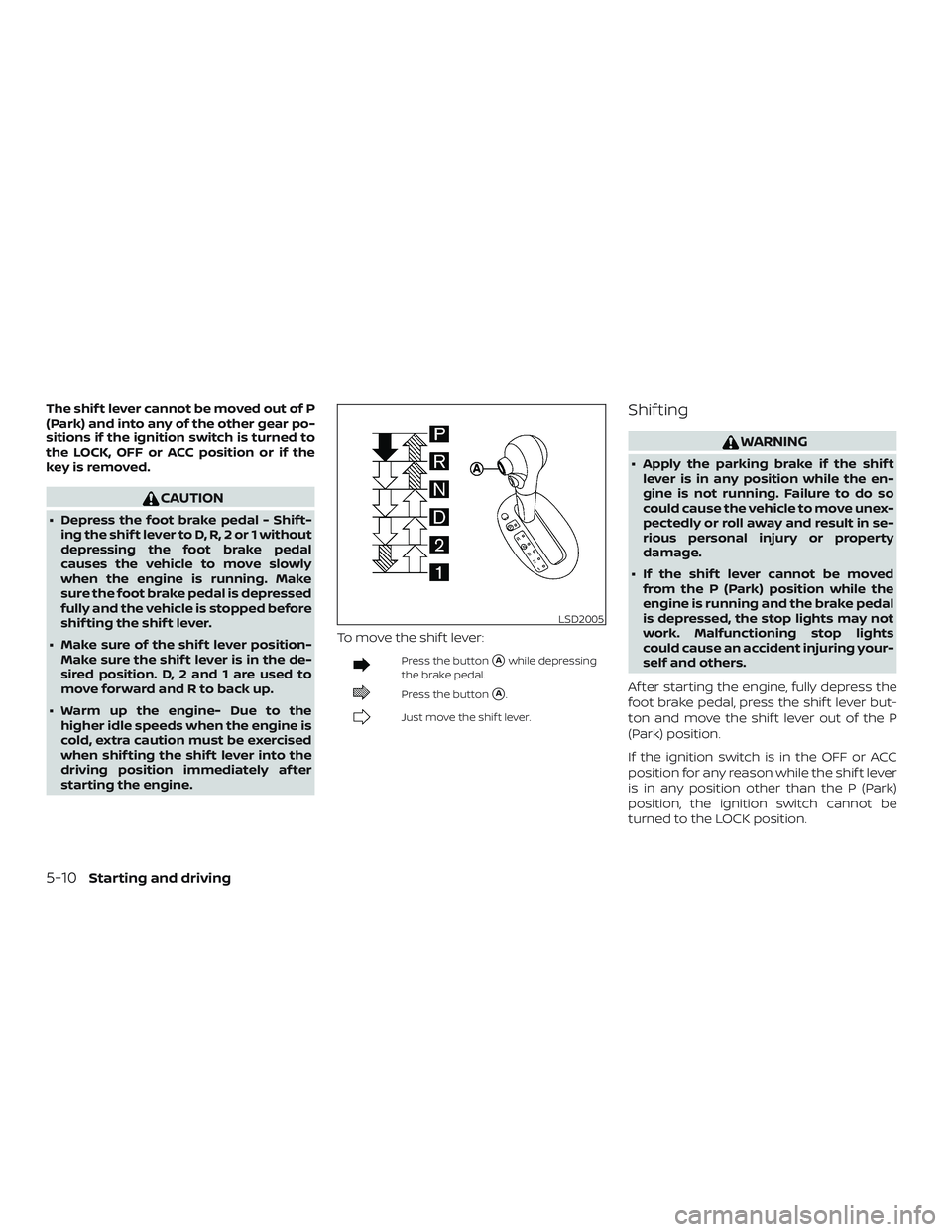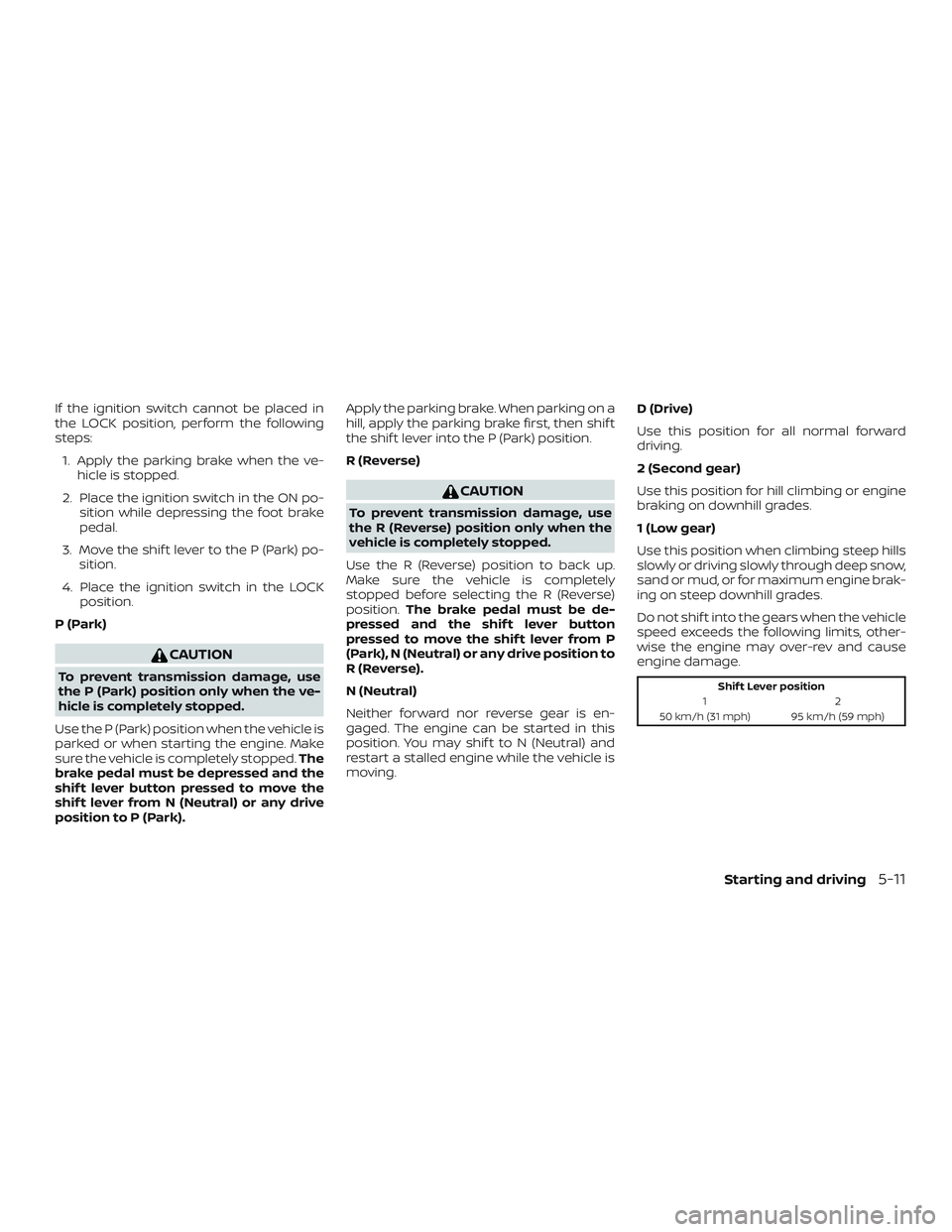Page 163 of 330

SCAN (tuning) button
Press the SCAN button. SCAN illuminates in
the display window. Scan tuning begins
from low to high frequencies. Scan tuning
stops for 5 seconds at each broadcasting
station that has sufficient signal strength.
When scanning, SCAN blinks in the display.
Pressing the SCAN button again during this
5 second period stops scan tuning and the
radio remains tuned to that station.
1 to 6 Station memory operations
Twelve stations can be set for the FM band
(six for FM1, six for FM2) and six stations can
be set for the AM band.1. Choose the radio band AM, FM1 or FM2 using the AM or FM button.
2. Tune to the desired station using manual, SEEK or SCAN tuning. Press
and hold any of the desired station
memory buttons (1 – 6) until a beep is
heard.
3. The channel indicator will then come on and the sound will resume. Pro-
gramming is now complete. 4. Other buttons can be set in the same
manner.
If the battery cable is disconnected or if the
fuse opens, the radio memory will be can-
celed. In that case, reset the desired sta-
tions.
Compact disc (CD) player
operation
Place the ignition switch in the ACC or ON
position, and carefully insert the compact
disc into the slot with the label side up. The
compact disc is automatically pulled into
the slot and starts to play.
If the radio is already operating, it automati-
cally turns off and the compact disc begins
to play.
CD button
When the CD button is pressed with a com-
pact disc loaded and the radio playing, the
radio turns off and the last used compact
disc starts to play.
SEEK and TRACK (Fast Forward, Rewind)
buttons:
When the
SEEK button orTRACK button is pressed while the com-
pact disc is playing, the compact disc plays
at an increased speed while fast forward-
ing or rewinding. When the button is re-
leased, the compact disc returns to normal
play speed.
SEEK and TRACK buttons
When the
SEEK button is pressed
while the compact disc is playing, the next
track following the present one starts to
play from the beginning. Press the
SEEK button several times to skip several
tracks. Each time the button is pressed, the
CD advances one additional track. The
track number appears in the display win-
dow. (When the last track on the compact
disc is skipped, the first track is played.)
When the
TRACK button is pressed,
the track being played returns to the be-
ginning. Press the
TRACK button sev-
eral times to skip back several tracks. Each
time the button is pressed the CD moves
back one track.
4-34Heater, air conditioner, audio and phone systems
Page 197 of 330

The shif t lever cannot be moved out of P
(Park) and into any of the other gear po-
sitions if the ignition switch is turned to
the LOCK, OFF or ACC position or if the
keyisremoved.
CAUTION
∙ Depress the foot brake pedal - Shif t-ing the shif t lever to D, R, 2 or 1 without
depressing the foot brake pedal
causes the vehicle to move slowly
when the engine is running. Make
sure the foot brake pedal is depressed
fully and the vehicle is stopped before
shif ting the shif t lever.
∙ Make sure of the shif t lever position- Make sure the shif t lever is in the de-
sired position. D, 2 and 1 are used to
move forward and R to back up.
∙ Warm up the engine- Due to the higher idle speeds when the engine is
cold, extra caution must be exercised
when shif ting the shif t lever into the
driving position immediately af ter
starting the engine. To move the shif t lever:
Press the button�Awhile depressing
the brake pedal.
Press the button�A.
Just move the shif t lever.
Shif ting
WARNING
∙ Apply the parking brake if the shif t lever is in any position while the en-
gine is not running. Failure to do so
could cause the vehicle to move unex-
pectedly or roll away and result in se-
rious personal injury or property
damage.
∙ If the shif t lever cannot be moved from the P (Park) position while the
engine is running and the brake pedal
is depressed, the stop lights may not
work. Malfunctioning stop lights
could cause an accident injuring your-
self and others.
Af ter starting the engine, fully depress the
foot brake pedal, press the shif t lever but-
ton and move the shif t lever out of the P
(Park) position.
If the ignition switch is in the OFF or ACC
position for any reason while the shif t lever
is in any position other than the P (Park)
position, the ignition switch cannot be
turned to the LOCK position.
LSD2005
5-10Starting and driving
Page 198 of 330

If the ignition switch cannot be placed in
the LOCK position, perform the following
steps:1. Apply the parking brake when the ve- hicle is stopped.
2. Place the ignition switch in the ON po- sition while depressing the foot brake
pedal.
3. Move the shif t lever to the P (Park) po- sition.
4. Place the ignition switch in the LOCK position.
P (Park)
CAUTION
To prevent transmission damage, use
the P (Park) position only when the ve-
hicle is completely stopped.
Use the P (Park) position when the vehicle is
parked or when starting the engine. Make
sure the vehicle is completely stopped. The
brake pedal must be depressed and the
shif t lever button pressed to move the
shif t lever from N (Neutral) or any drive
position to P (Park). Apply the parking brake. When parking on a
hill, apply the parking brake first, then shif t
the shif t lever into the P (Park) position.
R (Reverse)
CAUTION
To prevent transmission damage, use
the R (Reverse) position only when the
vehicle is completely stopped.
Use the R (Reverse) position to back up.
Make sure the vehicle is completely
stopped before selecting the R (Reverse)
position. The brake pedal must be de-
pressed and the shif t lever button
pressed to move the shif t lever from P
(Park), N (Neutral) or any drive position to
R (Reverse).
N (Neutral)
Neither forward nor reverse gear is en-
gaged. The engine can be started in this
position. You may shif t to N (Neutral) and
restart a stalled engine while the vehicle is
moving. D (Drive)
Use this position for all normal forward
driving.
2 (Second gear)
Use this position for hill climbing or engine
braking on downhill grades.
1(Lowgear)
Use this position when climbing steep hills
slowly or driving slowly through deep snow,
sand or mud, or for maximum engine brak-
ing on steep downhill grades.
Do not shif t into the gears when the vehicle
speed exceeds the following limits, other-
wise the engine may over-rev and cause
engine damage.
Shif t Lever position
12
50 km/h (31 mph) 95 km/h (59 mph)
Starting and driving5-11